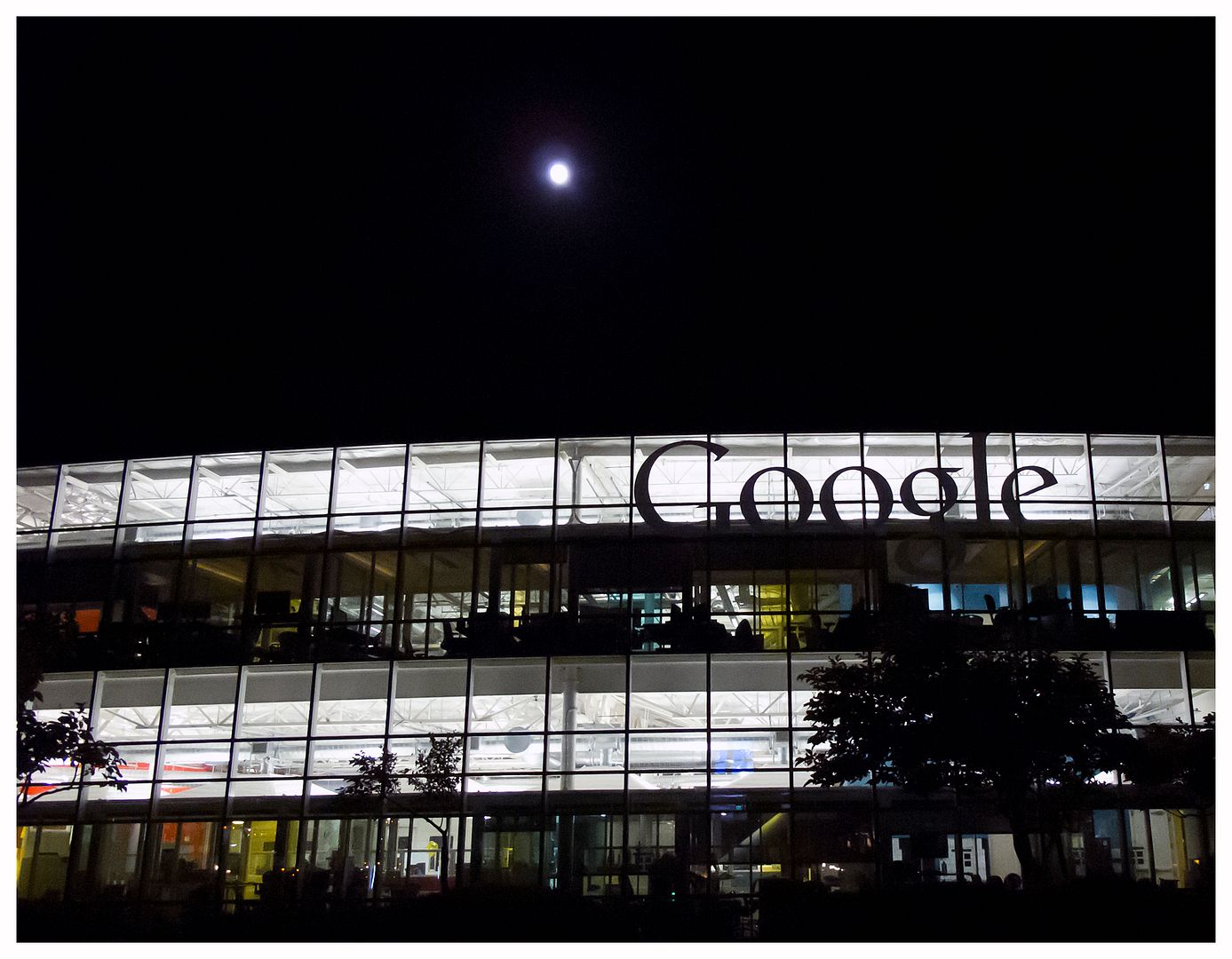 |
| Summer solstice moon over the Googleplex; Mountain View, CA; June 2013 |
My father-in-law is a glass-half-full kinda guy. In the midst of any conversation about science, medicine, or technology, it's not uncommon for him to proclaim, "This is an exciting time to be alive." Indeed, it is. But when I fell into bed early on Sunday morning, my head giddy with ideas from the first full day of Sci Foo Camp, my father-in-law's optimism seemed understated. Spend 48 hours with -- to list just a few of the approximately 250 participants -- a computer scientist studying machine learning and music, a theoretical physicist turning the idea of gravity on its head, a marine biologist eager to solve the mysteries of whale sharks, a genomic epidemiologist intent on elucidating outbreak transmission dynamics, and a national security strategist currently implementing the White House's terrorism-related information sharing priorities and...well, you come away with much to ruminate on and a lot of notes to parse. In short, Sci Foo Camp made for an extraordinary weekend!
I'm very grateful to Google, Nature, Digital Science, and O'Reilly Media for providing BAASICS with the opportunity to participate this year. Along with artist and researcher Sara Hendren, Lighthouse's Honor Harger, and XVivo founder Michael Astrachan, Selene and I presented as part of Saturday's "Art & Science" session. Both before and after the session, we met many terrific scientists and thinkers interested in exploring the fertile, if too often "mismapped" art-science terrain.
Professionally speaking, then, the weekend was a great success, but the principal pleasure of Sci Foo Camp is more general; it's a marathon version of the late night bull sessions I remember fondly from my undergraduate years. Despite their usually taking place in the wee hours, those heady conversations energized and informed my college experience as much as (and perhaps more than) any classroom didactics. Similarly, my Sci Foo learning wasn't limited to the many engaging (almost without exception) sessions on Saturday and Sunday. The notes that came out of conversations had over meals or drinks, during the ZomBee Watch walk on Saturday evening, and in the hotel lobby left me abuzz with ideas and questions, and buttressed my general optimism. I returned to San Francisco exhausted, but thrilled.
 |
| Captured ZomBee bagged by entomologist John Hafernik; Googleplex; Mountain View, CA: June 2013 |
During the "Art & Science" session, a theoretical physicist stressed the "fundamental importance of conversation," explaining how valuable, personally and professionally, his longtime relationship with a sculptor had been. Another participant, a molecular biologist cum inventor, highlighted the different approaches to "error" and "rightness" in art and science, arguing that certain types of contemporary science could benefit from more willingness to engage ambiguity and uncertainty. I wholeheartedly agree, and because I do, I feel that Sci Foo Camp is a rare and special thing. We have so much to gain through cross-discipline interaction and, although Sci Foo is chiefly focused on science and technology, the benefit of conversations across scientific specialities was apparent time and again.
Because I am a natural history and wildlife biology geek, my favorite example occurred during a session exploring how emerging technologies might aid wildlife conservation. South African conservation ecologist Simon Pierce explained that he is unable to accurately age whale sharks by counting the cartilage rings in biopsied sharks' vertebrae (because the rings aren't added once a year, as some biologists previously believed). Unfortunately, an alternative method that involves dating deposits of calcium phosphate in the cartilagionous skeleton also failed, as the whale sharks' vertebral centra are too poorly calcified to provide good data. At this point in the session, planetary scientist Scott Anderson asked Pierce how much calcium they were finding in the vertebra, down to the micrometer. Fish expert and comparative biomechanics cheerleader Adam Summers, also participating, replied with specifics. Anderson nodded and said, "Well, I focus on Mars, but I think we have technology that you could use to get an accurate read on the sharks." Interplanetary interdisciplinarity and the fundamental importance of conversation! Three cheers for Sci Foo!
A huge thank you to all of my fellow Sci Foo Campers and, again, to O'Reilly Media for conceiving of the project, to Digital Science and Nature for helping make it possible, and to Google for doing a cracking good job of hosting!
 |
| Selene tries out Google Glass at the Googleplex; Mountain View, CA; June 2013 |
Photo credits: copyright, Christopher Reiger, 2013

3 comments:
You're lucky. When I went in '08 we got the beta version of Google Wave. Let's hope Google Glass doesn't suffer the same fate. The SciFoo experience lives with me, always.
Google Wave? Yes, that was a decidedly less exciting Google invention. While I wouldn't rule out Google Glass being something of a bust, I think it's bound to be remembered...unlike Wave!
Here's hoping for future Sci Foos!
What a great synopsis. Thanks for doing what I have as yet failed to do - put the damn thing down in actual words. Yes, such a rich experience. It is the kind of place where you are rewarded for putting your neck out, for being fearless, for ignoring social anxieties. This is largely due to the uniformly dynamic interests of the participants, but also because true curiosity and wonder lives on when we are taken outside our everyday existence. Love live SciFoo and all it's cousins!
Post a Comment